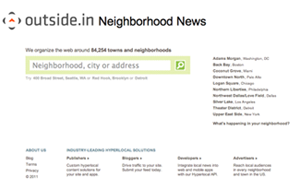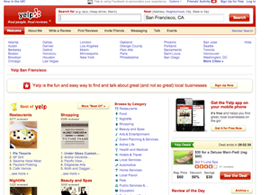outside.in
According to co-creator Steven B. Johnson (2006), outside.in is “an attempt to collectively build the geographic Web, neighborhood by neighborhood” (n.p.). Johnson explained that the purpose of outside.in is to unite the various voices emerging from hyperlocal bloggers, review sites, city government sites, and traditional media while grounding the information geographically.












June